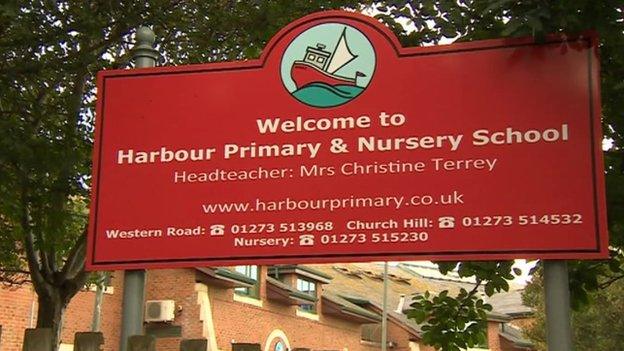Why fit unisex toilets in schools?
- Published
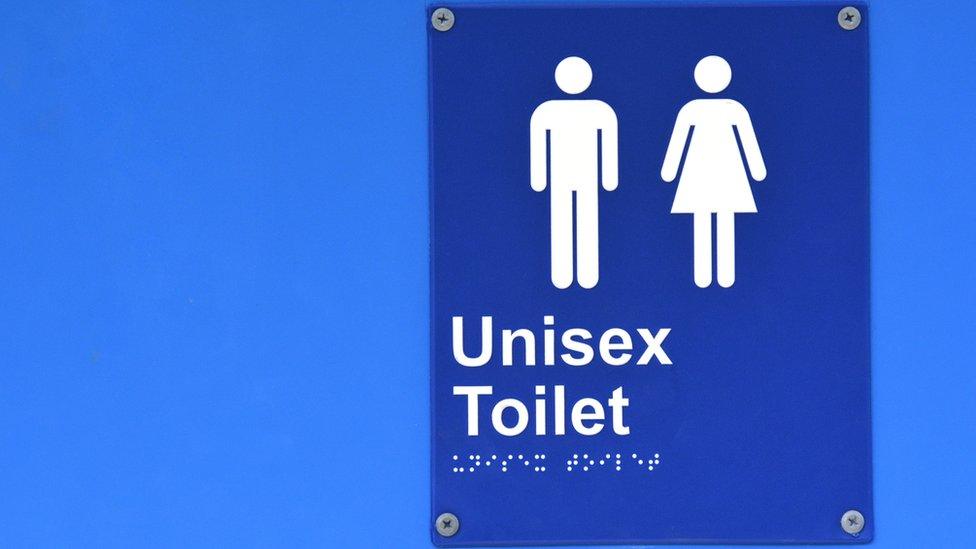
Glasgow City Council is the latest local authority in the UK to get caught up in a toileting controversy.
The council is planning to fit unisex toilets to three new primaries in the city and some parents have objected strongly.
But a number of schools in Scotland adopted unisex toilets several years ago. What's life like on the frontline of school toilet innovation?

Most young people have a degree of anxiety about going to the toilet at school, says head teacher John Devine.
"I think if you add to that the fear that there might be a group in there who are up to no good, that increases the anxiety level," he says.
Mr Devine is head of Breadalbane Academy in Aberfeldy, Perth and Kinross, a five-year-old building that uses a radically different layout for the toilets in the secondary school on the campus.
Instead of traditional boys and girls toilets with partially-enclosed cubicles in a closed off sometimes intimidating space, the academy uses full-enclosed cubicles that open into a public washbasin area.
Breadalbane Academy doesn't go full unisex - the cubicles are labelled male and female - but the washbasin area is mixed.
"On balance, it's slightly less intimidating for young people to use these toilets," Mr Devine tells the BBC.
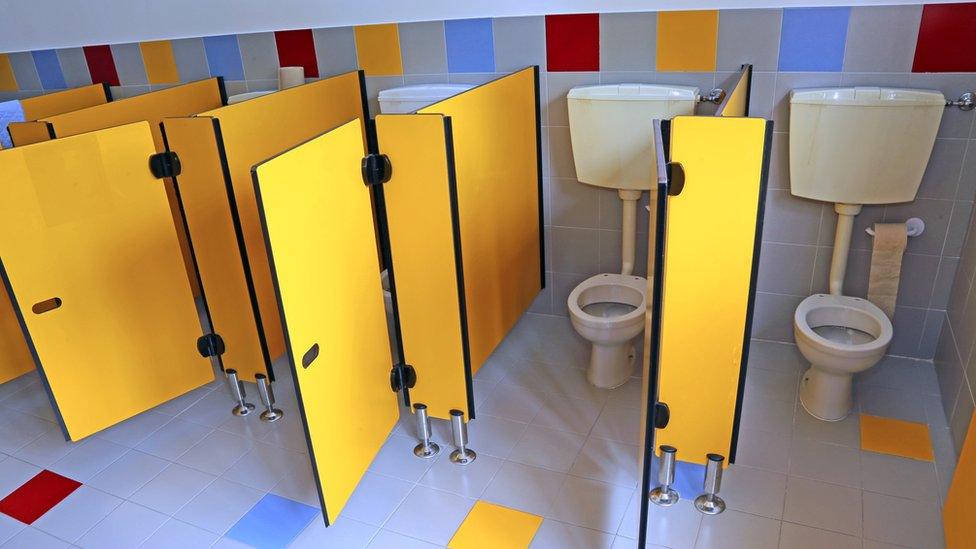
Traditional school toilets tend not to have fully-enclosed cubicles
He has been teaching for 25 years and says these toilets are a great improvement on other schools he's taught at, with virtually no vandalism and one less space where pupils can be bullied.
All prospective parents are shown the toilets if they're given a tour of the school, but Mr Devine says their design has proved uncontroversial.
"It's not an issue here - I've never had a concern about it expressed to me."
In the UK, unisex toilets are a relatively recent invention.
One of the first schools to try it was a secondary school in Stockport, near Manchester, in 2000.
The head teacher there at the time, John Peckham, argued that unisex cubicles opening into a public washbasin area would prevent bullying, vandalism and smoking.
Sexual liaisons
There were many critics of the plan, external, not least UK government's Department for Education which ruled that "the time is not right for the introduction of unisex toilets in our schools", saying they were technically illegal.
Parents also expressed concerns about young people being too embarrassed to use unisex toilets - or, somewhat on the other end of scale, that the cubicles could be used for sexual liaisons between pupils.
However, Mr Peckham was actually just a bit ahead of the times, as seven years later the Department for Education and Skills issued guidance encouraging all new schools to fit unisex toilets, external - with the main driver being that it cut down on bullying.
The recommendation only applied to new or refurbished schools being built in England, but some Scottish local authorities have also adopted the ideas in their guidelines.
Unisex toilets are mentioned in a 2013 document, external complied by Perth and Kinross, Angus, Dundee and Fife councils which outlines various options when building new schools.
For toilets, it recommends "open plan unisex toilet with central fountain handwash" as a way of reducing concerns around vandalism and ensuring there are enough toilets for both sexes.
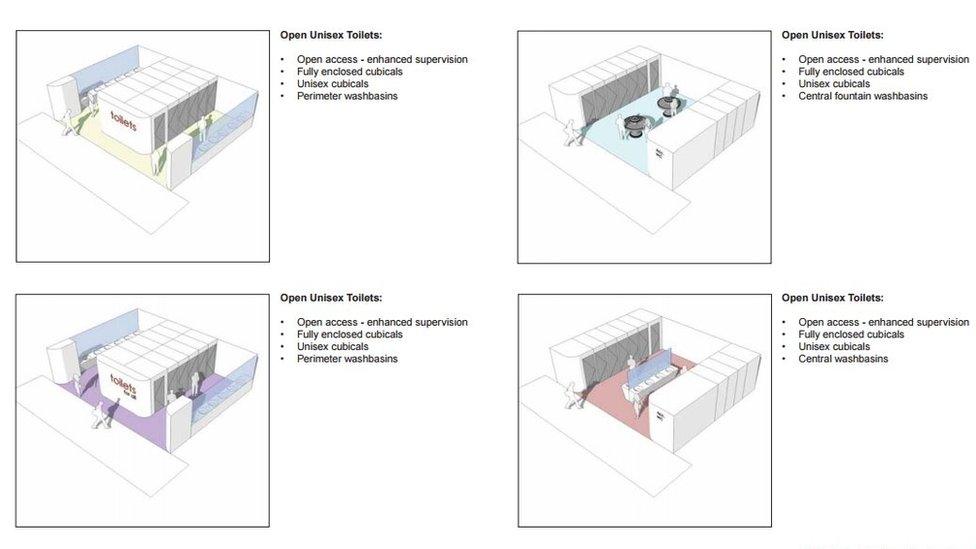
A 2013 report for Angus, Dundee, Fife and Perth and Kinross councils considered various designs of unisex toilets
But there is another motivation - aside from school cleaners desperately seeking the end of soggy toilet paper stuck to ceilings - and that's cost.
Unisex toilets with this design are often cheaper to build and maintain.
Or, as the document puts it: "Commonality of sanitary provision offers a good opportunity to optimise costs and provide a consistent layout with repetitive detailing which reduce construction costs and help improve quality."
Glasgow City Council says it decided to fit them to three new schools after consulting parents, pupils and staff.
The main aim is to "help improve behaviour and reduce bullying and vandalism" - which the authority says had been observed anecdotally in other areas of Scotland that have fitted unisex toilets in schools.
And there is another important aspect to the toilet debate.
Gender identity
LGBT groups say it is vital that gender stereotypes are not imposed on children primary or secondary schools - and unisex toilets can help with this.
"Transgender children and young people in particular tell us that they can feel uncomfortable using school toilets as they worry about being bullied or they are forced to use a toilet that doesn't fit with their identity," says Cara Spence from LGBT Youth Scotland.
"Some young people tell us that they go home to use the toilet or refuse to drink during the school day - so there are clear implications for their attendance, attainment and wellbeing."
Ms Spence urges that cubicles are made "as private as possible" and adds that any measure that might increase the safety of a pupil who fears being bullied is a good thing.
At Breadalbane Academy, where Mr Devine has been in charge of 700 pupils aged 2-18 since 2015, the crucial element for him is giving pupils choice.
As well as the two schools and nursery on campus, there are other areas open to the public that have traditional male and female toilets.
"There are other options on the campus for young people. Giving them choice is really important," he says.
"We owe it to young people to fulfil what they want."
- Published8 June 2016
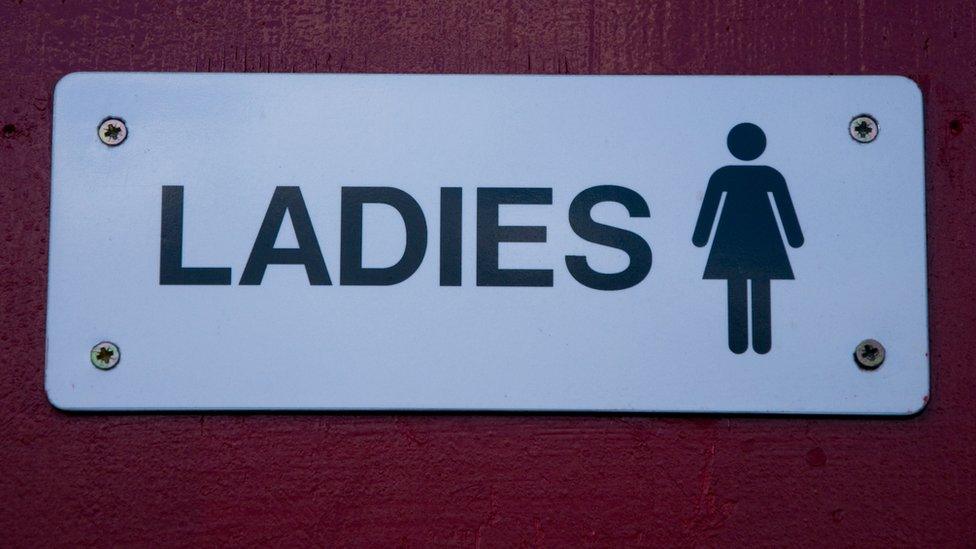
- Published7 October 2014
